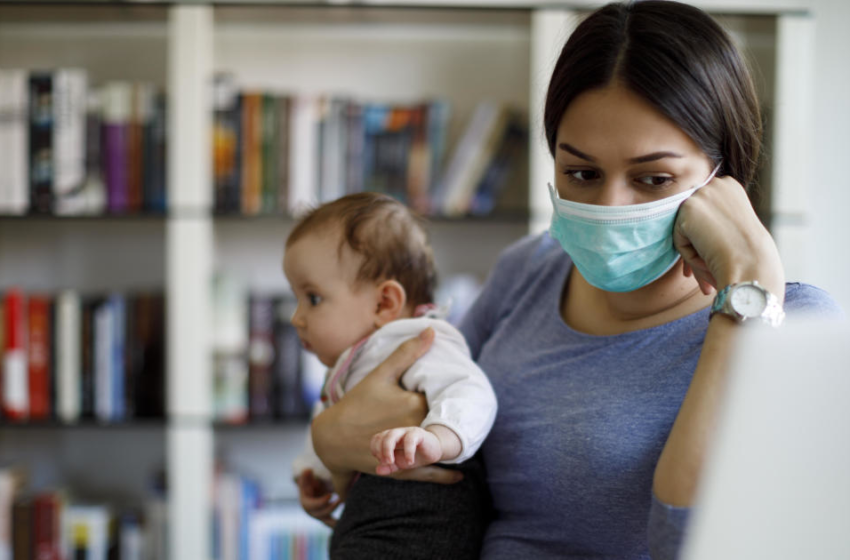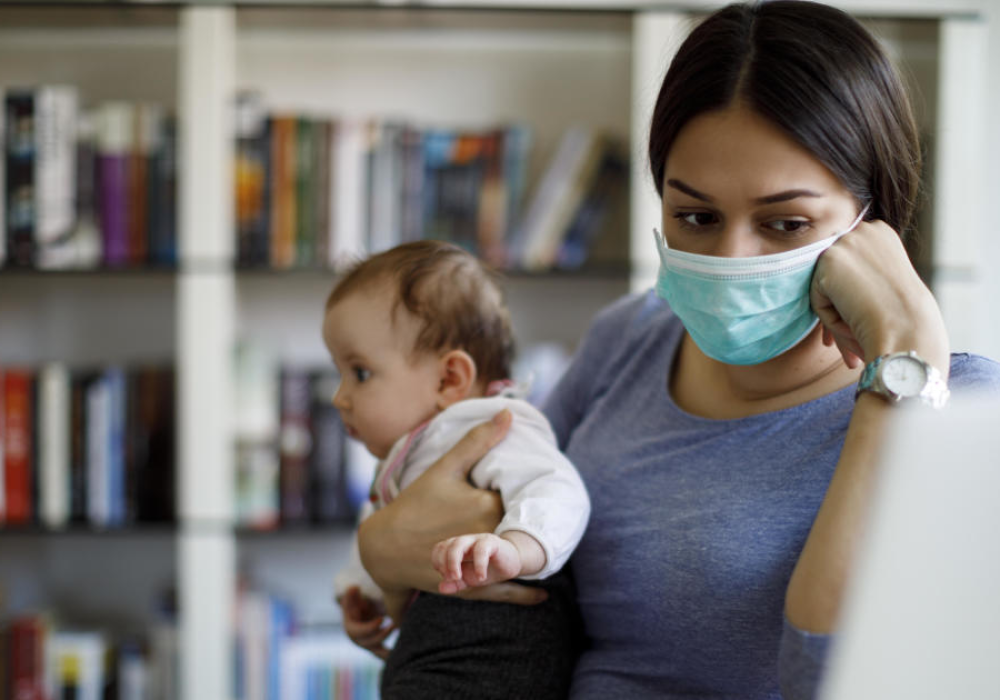It’s a problem a growing number of Americans have had to face: If someone in your household tests positive for COVID-19, what can you do to protect everyone else at home?
As Omicron continues to spread, the Centers for Disease Control and Prevention has revised its recommendations for Americans living in the same home as others who have tested positive for COVID-19, updating the major changes the agency made late last month to its guidance on isolation and quarantine.
The latest guidance lays out specific recommendations for Americans facing “ongoing exposure” to the virus at home because they live with an infected person they cannot separate from. The CDC recommends people who test positive stay in a separate “sick room” and use a separate bathroom, but acknowledges that is not always possible.
Americans should wear a “well-fitting mask inside the home” if they cannot avoid exposure to the infected person, the agency says, and should “limit the number of people who are in close contact” with the case. Exposed roommates or family members should get tested at least five days “after the end of isolation for the most recently infected person that lives with you.”
Though the agency acknowledged last month that many Americans were not completing the full period of isolation and quarantine, a recent Axios-Ipsos poll found most Americans still would choose to take steps to isolate themselves even if they had only a mild or asymptomatic infection.
But some 81 million people are estimated to be living in places “unsuitable for isolation or quarantine” from others.
“Here we have many families that live in small units or live close together. It’s hard to separate from the rest of the family. And so once one person gets COVID, it’s very possible that everyone is exposed within that household,” said Dr. Pia Pannaraj, who heads a pediatric immunization research group at Children’s Hospital Los Angeles.
Among families in Los Angeles, Pannaraj’s team found in 2020 that lower income levels and the number of people per bedroom in a home were significant factors in predicting the risk of the disease’s spread.
Nearly half of the 2020 study participants lived in households with more than two people per bedroom, and 77% of them had annual incomes of under $50,000 in the prior year.
“They need to work outside the home. They have different housing situations. And they have many times more difficulty with childcare. So they might have one family taking care of all the children in the apartment complex, for example, we saw that in some of our families, and so it was hard to prevent the infections,” said Pannaraj.
Pannaraj said that even in “extremely difficult” situations, there were things that families could take to successfully reduce their risk — ranging from rigorous mask wearing to spending as much time outdoors or in well ventilated areas.
“In our study we saw secondary transmission was very high in those settings where you had sometimes 10 or 11 people in a one bedroom, two bedroom apartment. But we can take some steps to try and prevent it,” added Pannaraj.
Some of the recent changes the CDC has made to its guidance are concessions to what most Americans are able to realistically do to limit the spread of the virus within their households and in their communities.
“We recognize that, at this point in the pandemic, a transmission in itself, if it’s not to a person who’s high risk, has, on average, less impact than it would have earlier in the pandemic,” Dr. Barbara Mahon, the CDC’s COVID-19 Response Incident Manager, told a panel of the agency’s outside advisers earlier this month.
“It’s very important that we keep society open. It’s important that kids be able to attend school in person,” added Mahon.
For health care workers, the agency said last week that asymptomatic providers who had recently recovered from the virus “do not require work restriction following a high-risk exposure.” In schools, the agency loosened its quarantine recommendations for children who had not yet been boosted.
“We’ve also updated recommendations for K to 12 school settings and have our additional recommendations for other special settings, early childhood education, for instance, will be coming shortly,” Mahon said in a webinar hosted by the Center for Homeland Defense and Security on Tuesday.
Is Omicron more contagious in the home?
The CDC’s tweaks come as scientists are still searching for answers to better understand the Omicron variant’s rapid spread in households around the world.
For a second week, the CDC on Tuesday estimated that the variant caused virtually all new infections in every region of the country. The pace of new cases has begun to slow nationwide, though several states are still seeing infection counts accelerate to record highs.
Early anecdotes of Omicron’s infections had raised alarm over the ability of the variant to spread. For example, in early December, the CDC published a report of Omicron appearing to be able to spread “despite strict quarantine precautions” between travelers staying in different hotel rooms.
However, health authorities now say Omicron’s rapid growth may be “largely driven by immune evasion” — that is, the highly-mutated variant is more capable of reinfecting people or of leading to breakthrough infections by dodging the body’s early defenses from neutralizing antibodies.
The World Health Organization said Friday that preliminary results from South Africa suggest that if there is any “intrinsic” higher transmission than Delta, “it is likely modest.” Citing early research on the Omicron wave in South Africa last year, the WHO concluded Friday that “immune evasion levels of 25% to 50%” could explain Omicron’s rapid spread.”
Health authorities in the United Kingdom reached a similar conclusion earlier this month. U.K. officials say Omicron appears “at least as transmissible as Delta” but could have “substantial immune evasion” to both “natural and vaccine derived immunity.” Their data found the variant has a higher “secondary attack rate” within households, compared to Delta.
Data from Denmark found Omicron to be as much as 3.7 times more infectious compared to Delta among vaccinated homes, but turned up “no significant difference” between the already high odds of infection among unvaccinated homes during Delta compared to Omicron.
“Our data indicate that the non-pharmaceutical interventions that were used to control the previous variants of SARS-CoV-2 are also likely to be effective against the Omicron [variant],” the Danish study’s authors conclude in a preprint that has not yet been peer-reviewed.
“On the other hand, although we showed that booster vaccines did offer some protection against household transmission, the reduced level of protection means that vaccination is less likely to be sufficient to curb transmission within a population,” the scientists added.
While Omicron’s spread may have reduced the ability of vaccinations to curb the spread of the virus in the home, experts say data shows the shots remain highly effective at lowering the risk of severe disease from the variant.
“Vaccines really help to prevent the severity of COVID-19 infections and complications. And even in a crowded situation, such as crowded households, vaccinations do help,” said Pannaraj.
CBS News reporter covering public health and the pandemic.










